Recipes From the Forest – Fall Edition

A Pacific Northwest winter can feel interminably long. Spring comes and goes in the blink of an eye. And summer here wipes away all memories of the winter.
Fall brings fungi. Berries. Apples. Truffles! Foraging through a forest in the fall is a fabulous way to soothe the loss of summer and ready the spirit (and the wardrobe, and the woodpile) for winter.
Delicious dishes can be made from the bounties found within our forests. Below are recipes for a few of them.
Remember, always be sure of your plant and fungi identification before eating wild foods. Do not eat mushrooms you cannot positively identify—there are plenty of poisonous and toxic fungi in our forests. Feel free to substitute store-bought mushrooms for foraged ones in these recipes.
Oregon Black Truffle
Leucangia carthusiana | Native
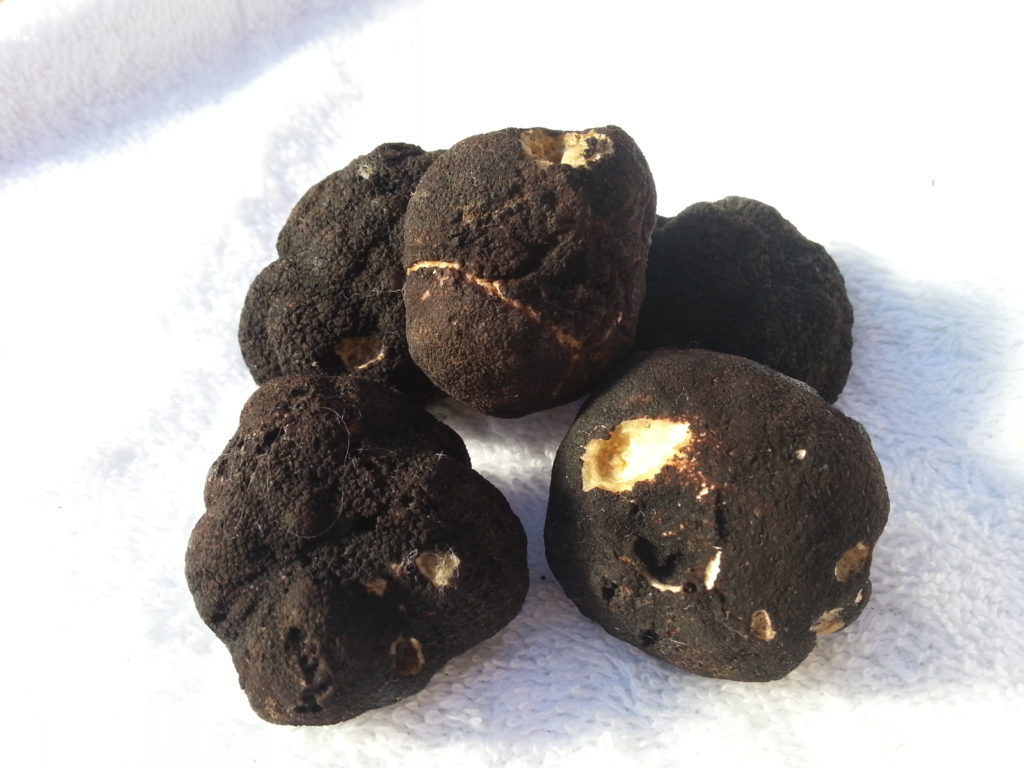
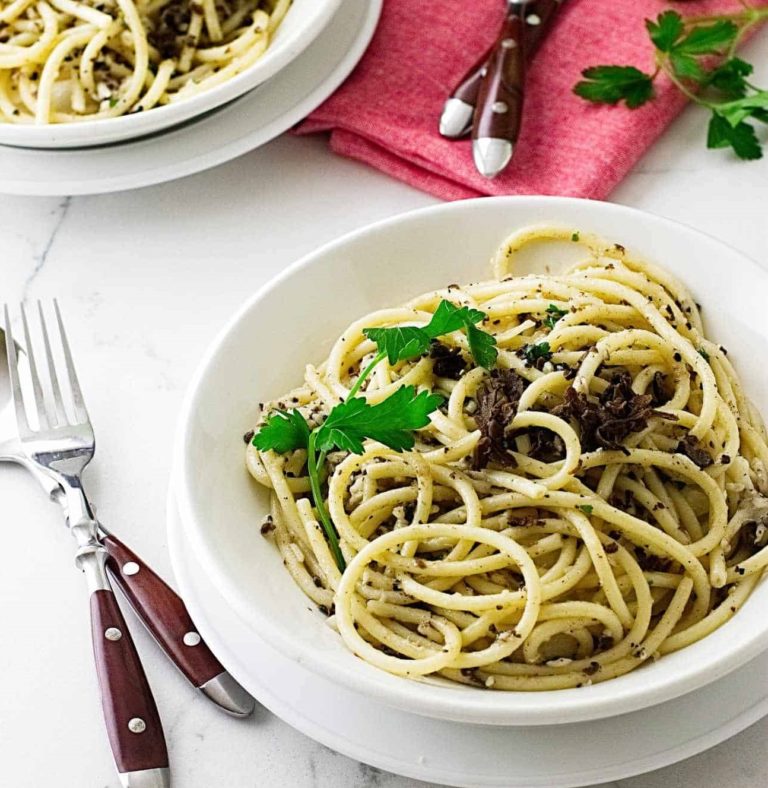
The Oregon black truffle has a unique smell unto itself — apparently it smells a little different to every nose, but some describe the aroma as floral, or fruity, like chocolate, or even cheese-like.
These truffles can be found in young (15-25 years) Douglas‐fir forests in northwestern Oregon and southwestern Washington.
When ripe, Oregon black truffles have a marbled, charcoal gray interior. The black exterior is typically spherical and either smooth or slightly pitted and warty.
Black truffles are wonderful cooked with high fat foods such as meat, cheese, and eggs. They pair well with lobster, caviar, butter, garlic, shallots, light-bodied vinegars, mascarpone, fresh soft and aged hard cheeses, citrus and herbs such as tarragon, basil and arugula.
Recipes: Pasta Strands with Black Truffle Sauce, Creamy Truffled Polenta with Pecorino & Roasted Butternut Cream Sauce and Oregon Black Truffle, Linguini with Mascarpone, Hazelnuts & Fresh Truffle, Oregon Black Truffle Cauliflwoer Fondue with Homemade Lavash Crackers, Potato Gratin with Black Truffle, Oregon Black Truffle Sauce
Golden Chanterelles
Cantharelles cibarius | Native
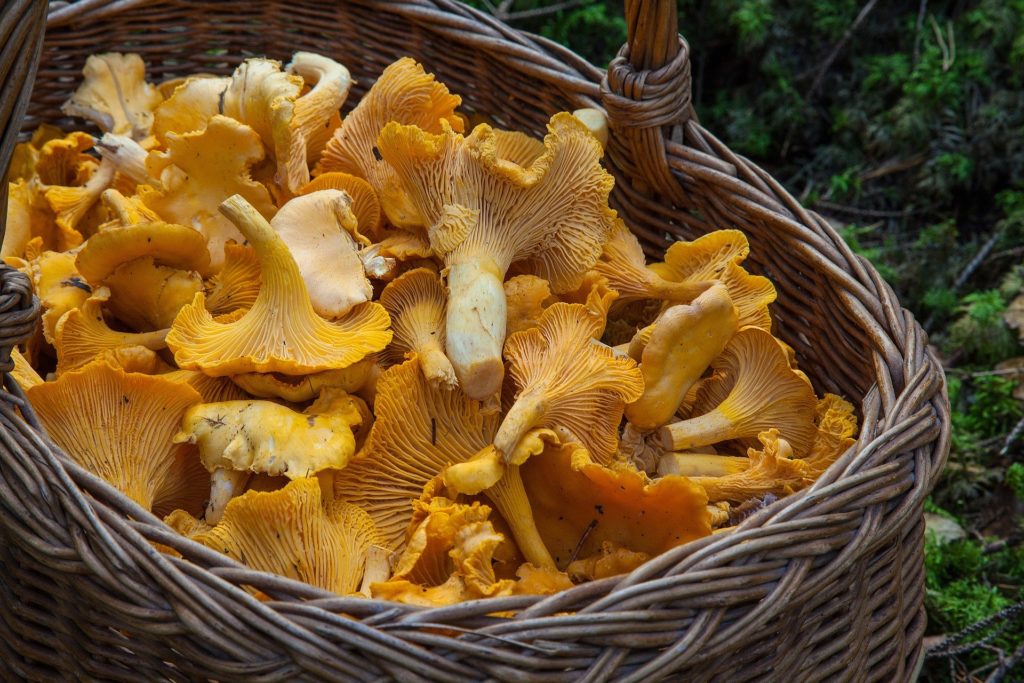
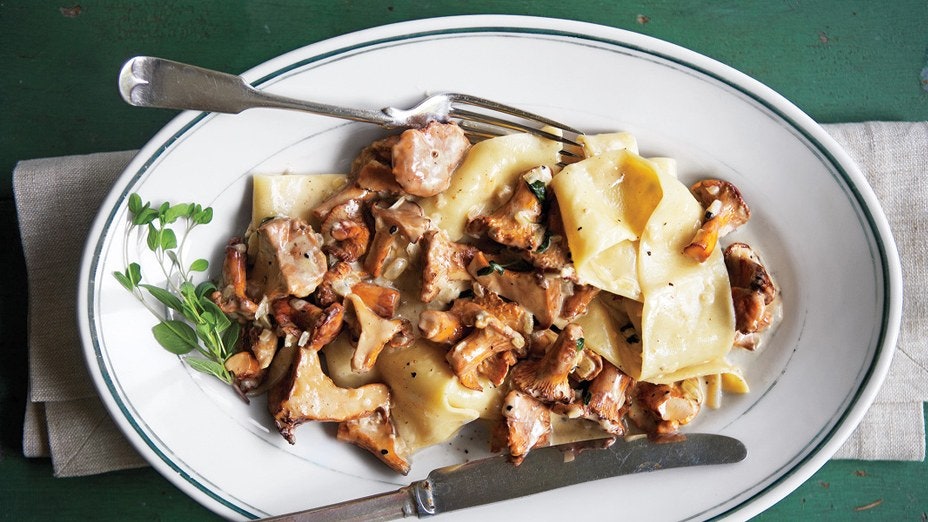
Chanterelles are among the most popular of fungi found in Pacific Northwest. There are several varieties of chanterelles in this area, several of them edible. Golden chanterelles have an earthy, peppery taste and their tan yellow skins make them relatively easy to spot—in theory!
Mushrooming can a be fun, satisfying, and delicious hobby, but knowing how to properly identify edible mushrooms—and avoid toxic or poisonous look-alikes—is the most important component of this activity. Before you go, make sure you know what you’re looking for, and what you’re not looking for. Consult ID guides in books like Wild Edible Mushrooms of the Pacific Northwest. The Mushroom Forager website describes a few of the most common chanterelle imposters, as does Leslie Land. Study up on the imposters and bring some pictures with you if you can.
Tips: Always remember these stern words of warning from Northern Bushcraft: “Do not attempt to identify a mushroom by matching the pictures alone; compare all the listed characteristics. Never experiment with a mushroom that you cannot positively identify, that is over-ripe, damaged, or collected from contaminated areas. Consuming poisonous mushrooms can kill you.”
Recipes: Chanterelles on toast, Fresh Chanterelles with Shallots, Fricassee of Chanterelles, Chanterelle & Fontina Frittata, Haricots Verts with Chanterelles
BONUS recipe from Pam Hayes, steward of FSC®-certified forest Hyla Woods:
Chanterelle Pasta Sauce
INGREDIENTS
chanterelles
white wine
shallots (chopped)
chicken breast
heavy whipping cream
parmesan cheese
salt
pepper
STEPS
1. Clean and chop chanterelles.
2. Dry saute them in a skillet and when they are cooked and most of the liquid has evaporated, add some white wine and let it cook down. Remove chanterelles.
3. In skillet cook chopped shallots and remove. In skillet cook thinly sliced chicken breast meat. Combine Chanterelles, shallots, and chicken in pot.
4. Add heavy whipping cream and simmer until the cream thickens.
5. Serve over pasta with grated Parmesan cheese, pepper, and salt.
Dandelion
Taraxacum officinale | Non-native
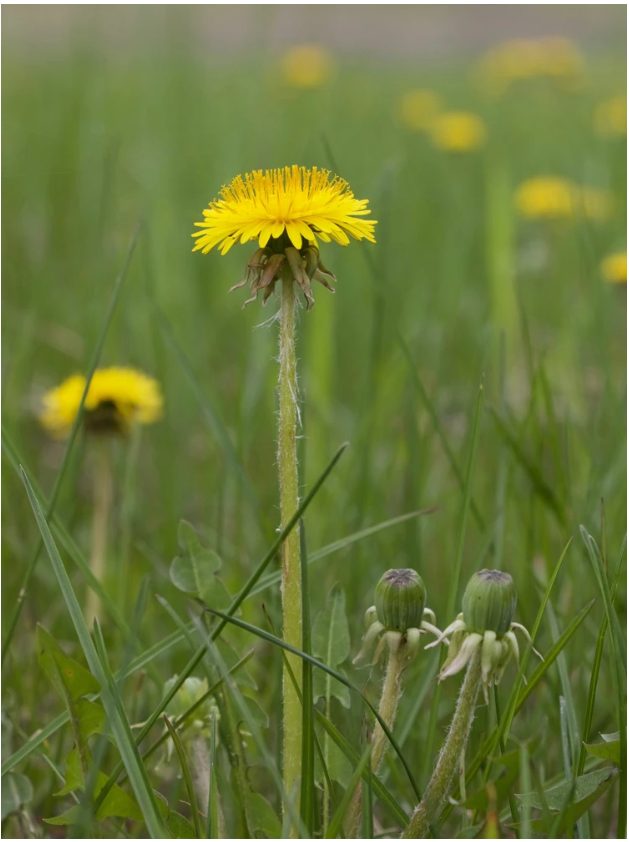
Dandelions are common throughout the Northern hemisphere. Dandelions are a hardy, herbaceous perennial with a rosette base producing several flowering stems and multiple leaves. The leaves generally have toothed edges. The leaves and hollow flower stems grow directly from the rootstock with only one bright yellow flower per stem. The flower heads mature into spherical seed heads containing many single-seeded fruits. Its roots, leaves, and stems all exude a milky white sap.
Dandelion leaves, roots, and flowers are medicinal and edible. The leaves are high in vitamins and minerals, and the roots contain inulin, mucilage, latex resin, and teraxacin. Dandelion leaves can be added to a salad or cooked. They can also be dried and stored or blanched and frozen. Flowers can be made into juice, or added into many recipes. The root can be made into a coffee substitute. Harvest the tender leaves in early spring, buds anytime, flowers when fully open, and roots during the fall.
Tips: Roast dandelion roots and brew like tea for a wild coffee substitute! According to some, it tastes a lot like coffee but less acidic.
Recipes: Dandelion Salad, Dandelion Banana Bread, Dandelion Greens with a Kick, Dandelion Jelly, Dandelion Beer, Dandelion Soda, Dandelion & Chicory Chai
Blue Elderberry
Sambucus caerulea | Spring to Fall | Native
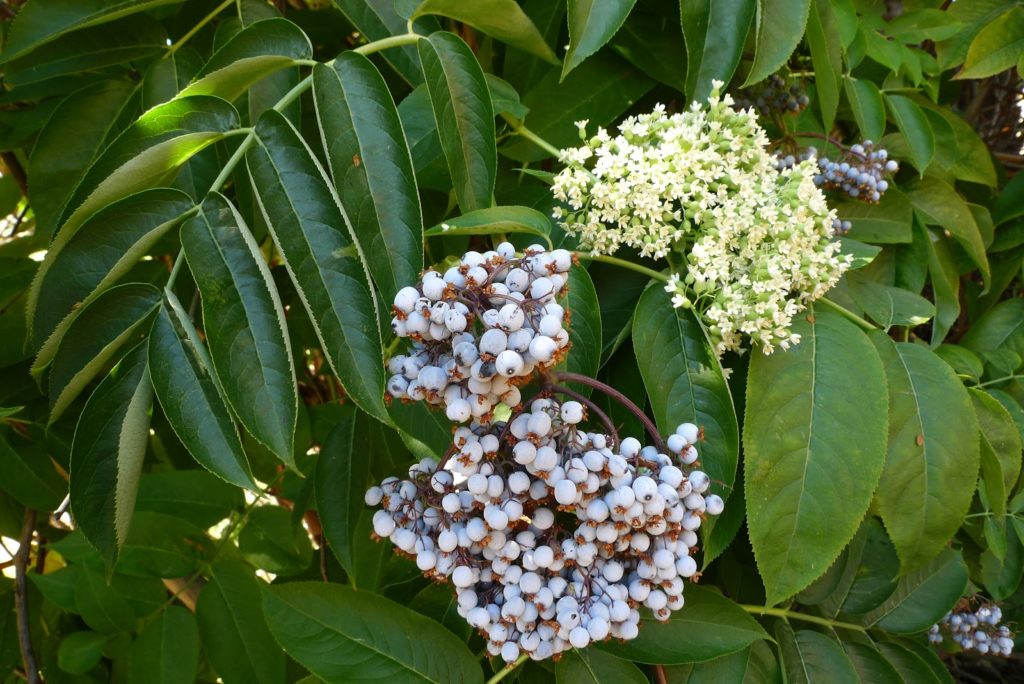

Blue Elderberry is a small deciduous tree found in sunny forest-edges with moist soils, below moderate elevation. They are common along stream banks, river banks, and open places.
Elder grows up to 20 feet high, with many long branches carrying opposite, lance-shaped, toothed leaves. Tiny star-shaped whitish-yellow flowers grow in sprays of dense flat shaped clusters. They bloom in early summer in lowlands and in late summer in the mountains. Deep blue berries develop in August through October and can get heavy enough that they cause branches to droop down toward the ground.
Unripe elderberries are poisonous. Raw berries can cause nausea and other gastro-intestinal upset. But cooked, ripe elderberries are perfectly edible when prepared properly. Elder flowers are harvested in spring when most of the flowers are open and others are budding. Elder berries can be harvested in late summer to early fall. Wait until shiny blue-black berries look powdery.
Tips: Blue elderberries may look more powdery white than blue. This is due to a bloom of naturally occurring yeast that coats the berries and is harmless.
Recipes: Easy Elderberry Syrup, Elderberry Fruit Leather, Elderberry Mead, Elderberry Pancakes, Elderflower Tea, Other Recipes
Baldhip Rose
Rosa gymnocarpa | Native
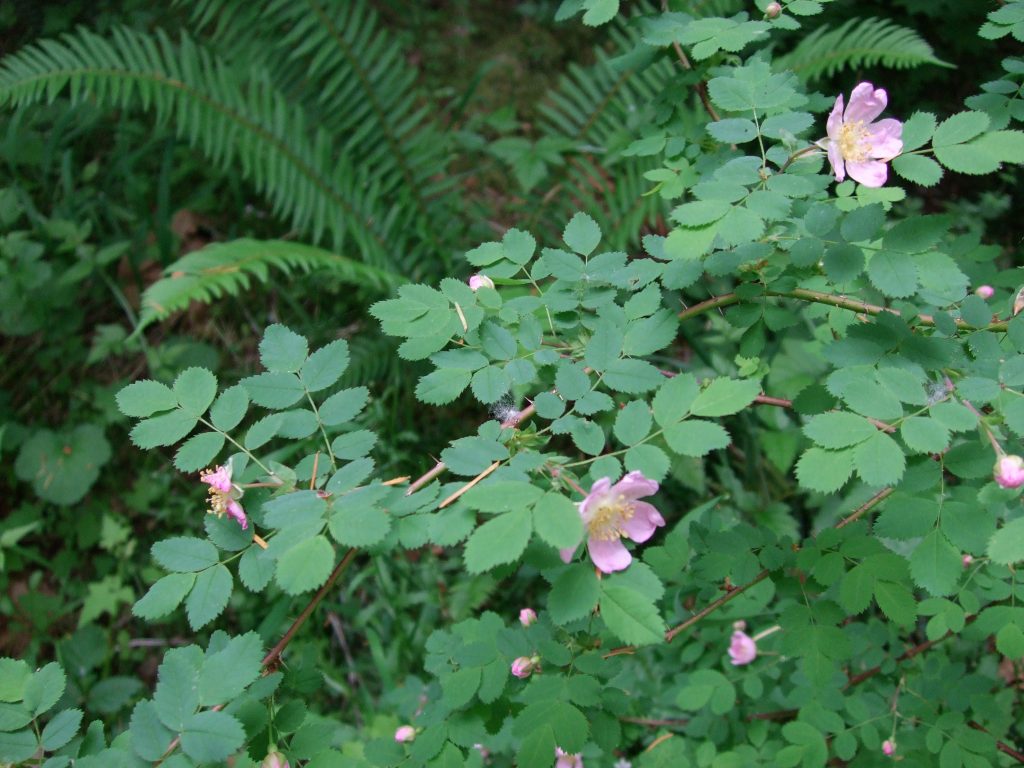
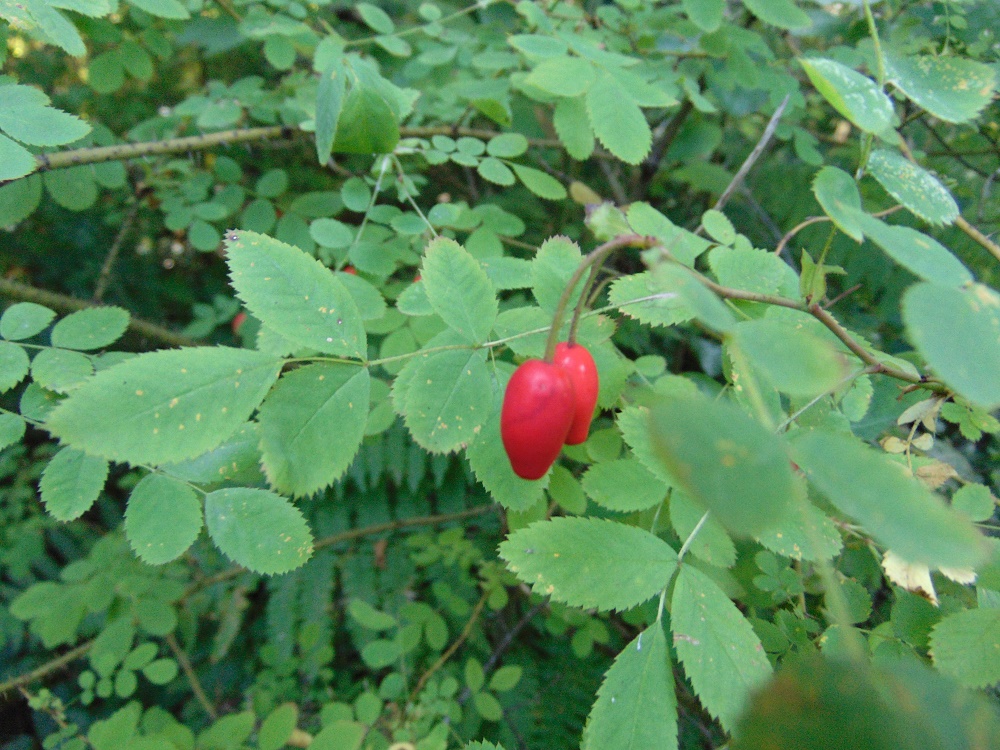
Baldhip rose is located in the moist, shaded understory of Northwest forests in mountainous and riparian areas within eastern and southern exposures. It is a spindly deciduous shrub with brittle weak straight spines. Its leaves are alternate and compound, with an odd number of double-toothed leaflets. Its flowers are pink, single, small, and have 5 petals, and pink-rose in color during May and June. Its fruits are orange to scarlet pear-shaped hips.
Rosehips are used for food and medicine. The hips are high in Vitamins A, B, C, D, and K, calcium, silica, iron, phosphorous and pectin. Be sure to only eat the outer rind, because the seeds contain hairs that are irritating to the digestive tract. Rosehips tea is used for sore throats, colds, diarrhea, and other conditions.
Recipes: Cranberry Rosehip Relish, Rosehip Recipes From the Wild, Rose Hip Freezer Jam, Rose Hip Jelly, Rose Hip Cordial, Fermented Rosehip Soda, Rosehip Ketchup, Rosehip Gin
Evergreen Huckleberry
Vaccinium ovatum | Native
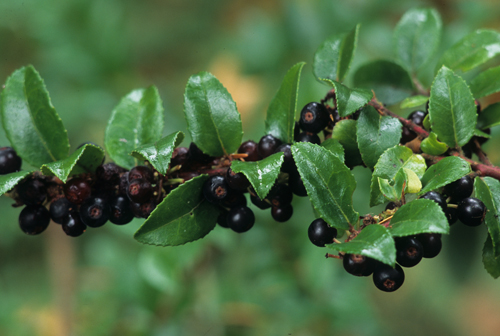
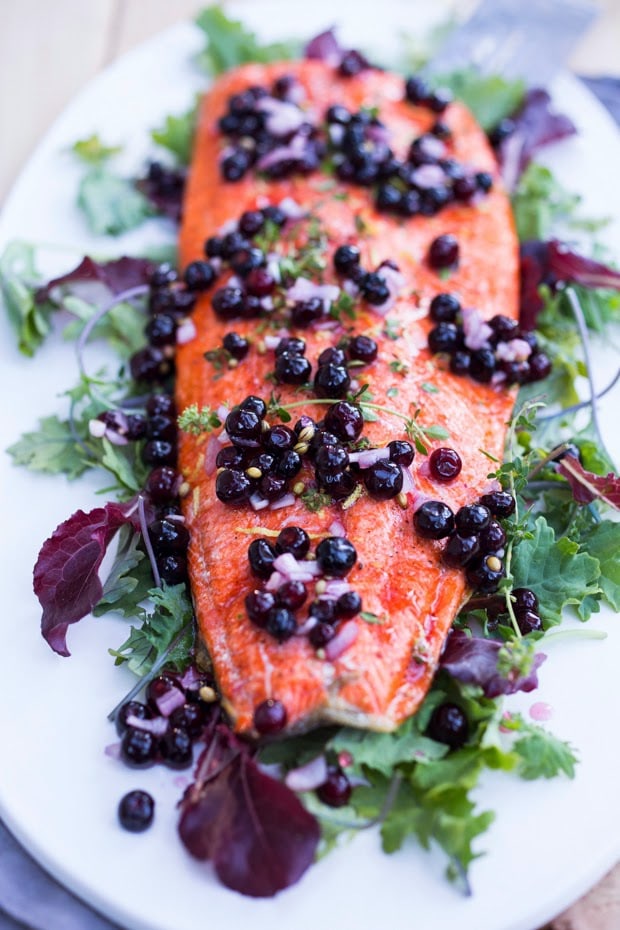
Evergreen huckleberry ripens in October or November, depending on elevation. They were and are commonly used by several tribes in British Columbia and western Washington, who have enjoyed the berries fresh, smoked, or sun-dried.
Evergreen huckleberry has immense value to widlife. Its leaves are foraged by deer, elk, ad rabbit. Berries are eaten by chipmunks, grouse, black bear, mice, scarlet tanagers, bluebirds, thrushes, and several other songbirds.
According to an NRCS factsheet: “The leaves and berries are high in vitamin C. The leaves and finely chopped stems contain quinic acid, a former therapeutic for gout said to inhibit uric acid formation but never widely used because of mixed clinical results. The leaves have been widely used to lower or modify blood sugar levels. Many herbalists maintain that huckleberry leaf tea may be useful in stabilizing blood sugar levels in cases of diabetes, and medical research has shown that consumption of the leaf extract decreases blood sugar levels shortly after administration. Taken on regular basis, huckleberry tea will gradually help alleviate both glycosuria and hyperglycemia and appears to have a beginning, but useful effect as an adjunct treatment to diabetes mellitus. The leaves are believed also to stimulate appetite, and have astringent and antiseptic qualities that are useful in urinary disorders.”
Check out this guide from Knowyourforest.org for tips on harvesting and marketing huckleberry from small private forestlands in the Pacific Northwest.
Tips: If your area is more prone to red huckleberry than evergreen huckleberry, most of the recipes below can be made with red huckleberry too.
Recipes: Grilled Salmon with Huckleberry Relish, Huckleberry Shrub (Drinking Vinegar), Evergreen Huckleberry Chutney
BONUS recipe from Teo Rautu, a member of NNRG’s fabulous forestry team:
Huckleberry Buckle
INGREDIENTS
brown sugar
white sugar
shortening
egg
milk
vanilla essence
white flour
baking powder
salt
huckleberries
cinnamon
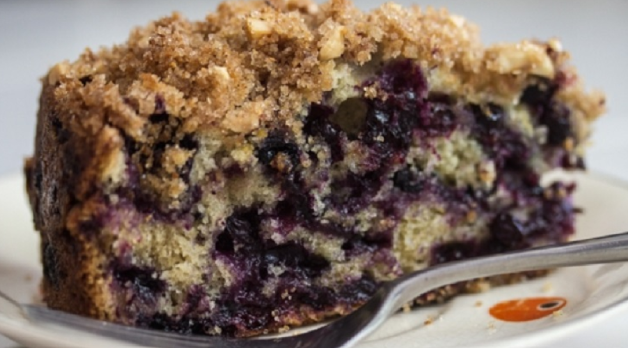
STEPS
To make the batter
- Mix:
½ cup white sugar
¼ cup brown sugar
¼ cup shortening - Add:
1 egg
½ cup milk
½ tsp vanilla - Add:
2 cups white flour
2 tsp baking power
½ tsp salt - Dough should be stiff. Fold in 2 cups drained huckleberries. Spread dough in greased 8×8″ or 9×9″ pan.
To make the topping:
- Mix:
½ cup white sugar
½ cup plus 2 TBS white flour
½ tsp cinnamon
¼ cup softened butter - Sprinkle over top of batter, then bake at 350 for approx 40 minutes,
or until knife inserted into center comes out clean.

Leave a Reply